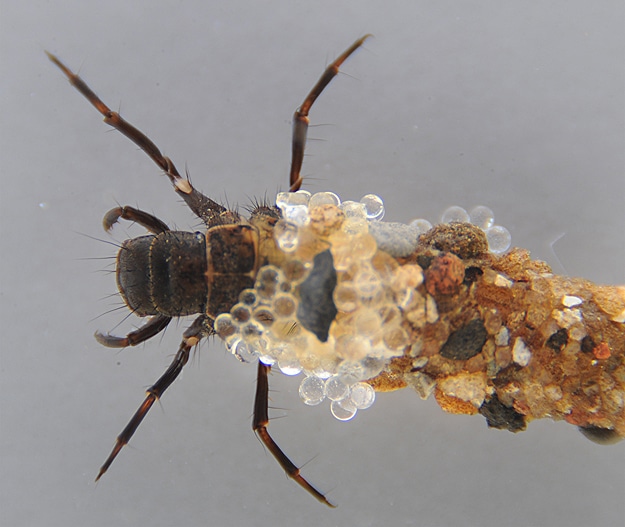Wads of jewels are not my thing. But bugs? When it comes to bugs, I’m all over them. And now they can be all over me – not the bugs themselves, but the jewelry that they’ve designed. I’m not talking about tent caterpillar gowns or beehive hairdos either. I’m talking about jewelry designed by an aquatic insect – the caddisfly.
If you think there’s nothing better than a long, cascading piece of jewelry in which gold and opals mix with precious gems, then you and the caddisfly have a lot in common.
The caddisfly is an insect decorator. In its native stream environment, this larva emerges from the leaves and carefully crafts a tubular home out of tiny sticks, pieces of shell, and grains of sand. It attaches these pieces of wood and stone to a sticky sock that surrounds its body, and it carries this house around on its back as protective camouflage, much like a hermit crab. When the insect larva grow up, it grows wings and leaves its tube behind.
In the eighties, French Artist Hubert Duprat decided that he would embark on an unusual collaboration, one that involved insects as artists. He’d give them fresh water, juicy leaves, and an environment free of predators. He’d also place precious stones and gold on the bottom of their habitat. The caddisfly larva would emerge from their cases, and when they emerged they’d leave behind a unique work of art.
Imagine being immersed in a vat of emeralds, opals, and gold and asked to create a sculpture, one that you’d wear ever day of your life. It would be your fortress and your biggest work of art. Thanks to the curious hankerings of a number of naturalists and artists including Duprat, that’s what these bugs do. Today there are a number of stores that sell caddisfly-crafted jewelry. If you can hang it from a string or place it on a ring, you too can wear a larva case to your next soiree.
You can see those caddisflies in their little berets now, can’t you? Apparently, they also like jewels.
Image Credits: [Wildscape] [Caddis Lady] [University of Utah]

COMMENTS